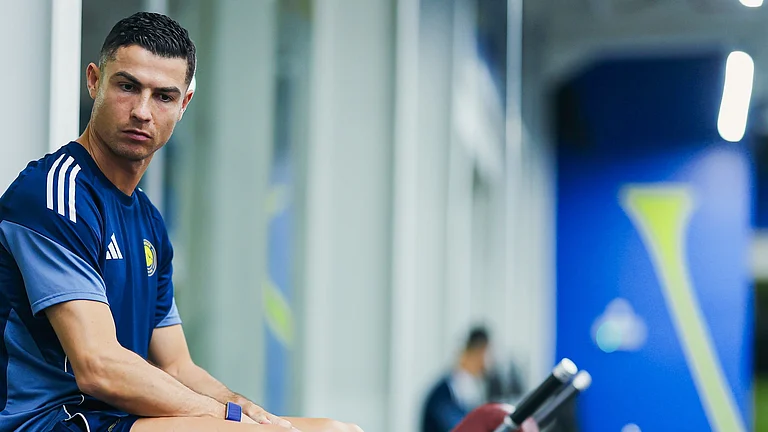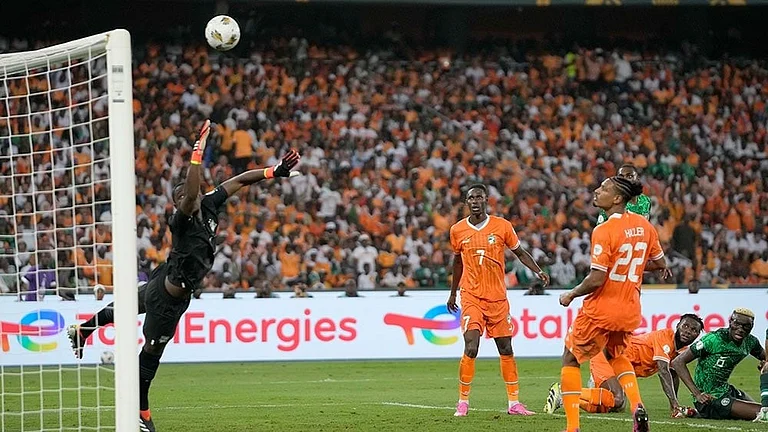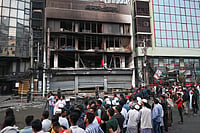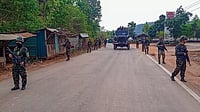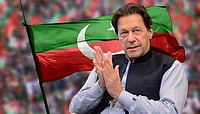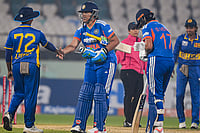AMARTYA Sen could win the Nobel prize because more than four generations of his family were literate. People who are first generation literate like us don't even inhabit the same universe as winners of Nobel prizes," says Chandrabhan Prasad, president, Dalit Shiksha Andolan. The group, which has for the last five years been compiling a databank of urban employed Dalits, says they are up against "an apartheid in urban institutions".
An active Dalit intelligentsia is already well established in Maharashtra and Karnataka. In fact, Dalit intellectual activity has continued since the 1920s, inspired mainly by an Ambedkarite agenda and a sense of an identity separate from Hindu society. However, Dalit literary activity has assumed a definite form only in western and southern India. But now for the first time in north India, a new group of Dalit writers is emerging which aims to create, over the next decade, a corpus of literature to challenge what they describe as "caste Hindu knowledge" and address issues specific to north Indian Dalit politics. Prasad, 39, is part of this north Indian Dalit literary activism which echoes, to some extent, the ruthless pragmatism of BSP leaders Kanshi Ram and Mayawati, although it is critical of them for not concentrating adequately on development programmes.
Almost half-a-century after reservations, a shocking 63 per cent of Dalits are still illiterate, barely 7 per cent can read or write articles and novels, a majority of their workforce are landless labourers. About 45 per cent of all agricultural labourers are Dalits. Today's, Dalit intellectuals—most of them the children of illiterate agricultural or urban labourers—are benficiaries of reservations in schools and in government who at the same time emphatically reject the "reservations mentality". Instead they aggressively question the spectrum of upper-caste shibboleths: Independence, Gandhi, the media, even Kautilya and the Bhakti movement.
"For the first time," says Ram Narayan, scholar on Dalit politics at Delhi University, "a new literature is emerging in north India which aims to speak and interpret for itself." Dalits are no longer content to be the raw material for others, they want to interpret their own history and society.
Nor do they see colonialism as entirely a bad thing. "The Macaulayan system of education," Prasad believes, "at least freed education from the grip of upper caste gurukuls. The bizarre fact is that while the president of India is a Dalit, there is not a single accredited Dalit journalist and over 90 per cent are still struggling for basic needs." According to official records, an increasing number of Dalits are killed every year in caste riots. In 1989 grievous offences against Dalits (including rape and murder) were listed at 19,422. In 1991, the figure rose to 22,424. "Even institutions like the Jamia Millia have only one Dalit teacher," points out Tej Singh, lecturer at Delhi University, who believes that reservations should also be extended to jobs in the private sector. Narayan points out however that the debate on reservations for Dalits needs to be put back on the course that Ambedkar and Jagjivan Ram had visualised. "Reservations," says Narayan, "were not intended to provide jobs. Reservations were intended to give Dalits a stake in the political process. To install a Dalit as head of a district administration was geared to changing the power equations in the area. Reservations should not simply become a means to secure employment."
Most north Indian Dalit intellectuals hold government jobs or a few university posts but say they are victims of reservations as much as its beneficiaries. They believe that varna elites are gaining legitimacy by reducing Dalits to tokenist symbols and trapping them in an "indigenous but never equal" ghetto. The tragedy of reservations has been that while there can be a Dalit president, vice-president or governor, there are never Dalit prime ministers or chief ministers. (Aside from Mayawati, there have been only three Dalit chief ministers—D. Sanjiviah of Andhra Pradesh, Ram Sundar Das in Bihar and Jagannath Pahadiya in Rajasthan.)
Prasad says Dalit IAS officers in UP today are more often than not consigned to departments like animal husbandry and fisheries. Why should a Dalit officer, they argue, not be eligible for portfolios like finance or education? Mata Prasad was one of the few Dalit IAS officers to have been made home secretary (by Vir Bahadur Singh in UP). Even Dalit diplomats, it is pointed out, are inevitably sent to unimportant African countries in a quaint manifestation of 'racial' prejudice.
LEGISLATIVE panaceas are no longer enough. "Invisible upper caste networks" and unspoken prejudices continue to imprison Dalits in permanent segregation. "The effects of Mandal have created a social crisis for us. We're being driven off the land by OBCs but being denied a place in urban India. Our future looks dark," says poet Sooraj Pal Chauhan. Adds student Mira Saroj: "The education of Dalit women has been ignored by the political leadership. Sadly, an educated Dalit woman is almost a contradiction in terms."
Activist literature has become a crucial political device for this educated minority. In Maharashtra, write Oliver Mendelsohn and Marika Vicziany in their new book The Untouchables, the political void left by the demise of the Dalit Panthers of the 1970s was filled not by another political party but by an extraordinarily political body of writing with the rejection of the varna system as a common theme. In the late '70s hundreds attended the conference of Dalit writers in Karnataka. Since then the movement there developed in many directions with the setting up of the weekly magazine Sugathi in the early '80s. Run by a group of young Dalits and written in Kannada, the magazine transmits popular culture, film and book reviews with social comment on Dalit affairs and has a circulation of over 65,000. In fact, a Dalit group in Karnataka rejects reservations of jobs and parliamentary seats and is engaged instead in increasing their knowledge and providing literature on Buddhism.
"Dalits today are hungry for knowledge," says S.S. Gautam of the Dalit Sahitya Research Foundation. "At the world book fair, NCERT sold books worth Rs 1.3 lakh in four stalls but we sold books worth Rs 90,000 in just one stall. Our forefathers never even saw a book. Today Dalit officers even spend their Provident Fund in buying books. Our homes are mini-libraries and the pen is our sword." The Dalit Sahitya Research Foundation, set up in 1994, publishes over 50 low-priced (Rs 10 to Rs 100) volumes of Dalit stories and poems every year. A number of books are published at the expense of the writers themselves.
It's no longer a question of lobbying for rights. Since public life in urban India is monopolised by the three varnas, the cooperative flat-owning, salaried Dalit has an assertive agenda: a war against attitudes. A number of new publications are a mark of restless intellectual activity. Om Prakash Valmiki's Jhoothan, Jai Prakash Kardam's Jhappar, Mohandas Namisarai's Apne Apne Pinjre, Dr Dharam Veer's Kabir Ke Alochana and Sheoraj Singh Bechain's work on Ambedkar are all attempts to enter the literary mainstream. Bechain is convenor of the Dalit Writer's Forum and a prominent writer. "Knowledge has never been democratic in this country," he says. "In intellectual life, poetry, the arts or in academics there is no presence of Dalit traditions of learning. This is a loss for the whole country, because we need more traditions of knowledge, not the repetition of the same history."
According to Bechain, Dalit literature should be given the status of mainstream Indian literature. The reason 15th and 16th century Bhakti leaders like Dadu, Raidas, Pipa and Sahju Bhai became co-opted by varna education is because Dalits have never had a say in deciding what became accepted literature. Even writers like Premchand, Bechain says, have only reinforced "non-human" stereotypes of Dalits.
Dalit writers are also engaged in their own revision of the freedom movement. Jai Prakash Kardam, a deputy director in the department of culture and an active member of the Dalit Writer's Forum, says India's cultural legacies did not become truly "independent" in 1947. We continued to propagate upper-caste varna history. "Why is it that Dalit freedom fighters like Ram Pat Chamra, Mata Din Bhangi, Jhalkari Bai—a legend in Bundelkhand who, in a particular battle, is said to have fought in place of Lakshmibai—Rambharat Pasi and Tilka Majhi, have been suppressed?" The Dalit approach, says Kardam, is humanist, non-brahminical and denies the existence of God. Yet such modernism is consigned to the periphery.
"When we play the flute or dance, we are called names. When others do it, they are artistes! When we draw, we are not taken seriously. When others take away our village motifs and sell them abroad they are seen as 'folk artists'. Even in the '90s, Ekalavya's thumb is being cut off every day," says Kardam.
HE points out that a Dalit photographer from Andhra, B. Ashok, who has exhibited his works in Japan, got no mention in the media in India. In fact, the media, says Prasad, practises apartheid on the Dalits. In national dailies like The Times of India or The Hindu, a survey has shown that during January-September 1996, each carried less than 1 per cent of the total articles on Dalits. "All the opinions expressed in the Indian media are of caste Hindus, the Dalit agenda is totally inconsequential to the national discourse and the media workforce comes entirely from the varna background. Yet Dalits constitute 24 per cent of India's total population," says Prasad.
This new generation of writers is critical of an older generation of Dalit gentlemen who were co-opted by the varna system, to the detriment of their own community. They describe people like President K.R. Narayanan as "Nehruvian Dalits", who, they feel, were betrayed by Nehru. In the late '50s, says Prasad, Dalit IAS and IPS officers tried to distance themselves from their caste and get closer to the upper castes. But their elevation did not democratise society, instead the early Dalit officers became victims of upper caste patronage. They failed to recognise that even Nehru as chairman of the Fundamental Rights Committee provided a "scienti-fic" justification for the continuation of the caste system.
Thus, the '50s Dalits never got legitimacy from the varna communities and in the '80s and '90s are getting more involved in community affairs. The main enemies of the Dalits today are, what they call, the "neo-kulak OBCs" who are pushing Dalits off the land in rural areas. In fact, the attempt now is to re-define brahminism. The recent Thevar-Dalit riots in Tamil Nadu show that it is the neo-brahminism of the OBCs which is a greater enemy than brahminism in its old form. "A Dalit-upper caste alliance is the only way in which these groups can survive the OBC onslaught," Prasad argues.
Yet the community is divided and the urban employed members have few contacts with rural Dalit communities. The Dalit movement in Karnataka, for example, is an urban movement and a Dalit leader there once spoke of the backwardness of the Adi-Karnatakas who, according to him, "remained locked in a world of drudgery and alcohol." Indeed even among the Dalit intelligentsia in the cities, suggest Mendelsohn and Vicziany, the assumption seems to be that there's no point trying to rouse the consciousness of relatives in the village. Their time is better spent in working with educated younger members in the cities and staging seminars and demonstrations that will attract the attention of the media. "In the absence of resources, the ability to network is limited and more attention is paid to submitting memorandums or raising issues in public," says Shyam Babu of The Observer, probably the only Dalit journalist in Delhi.
But Dalit writers say the battle for culture is as crucial as rural mobilisation. The varna castes are most reluctant to include Dalits in the arena of arts and literature. This is where upper-caste informal networks are the strongest. "But unless history, literature and art admit our contribution, they will remain hostage to caste Hindu cliches," says Chauhan.







